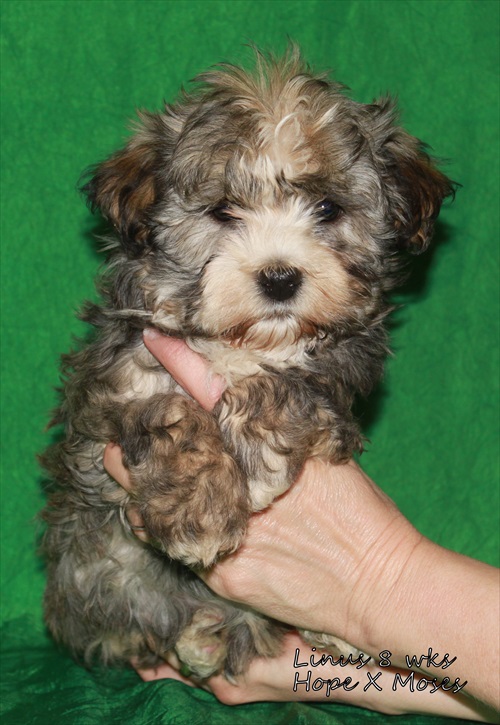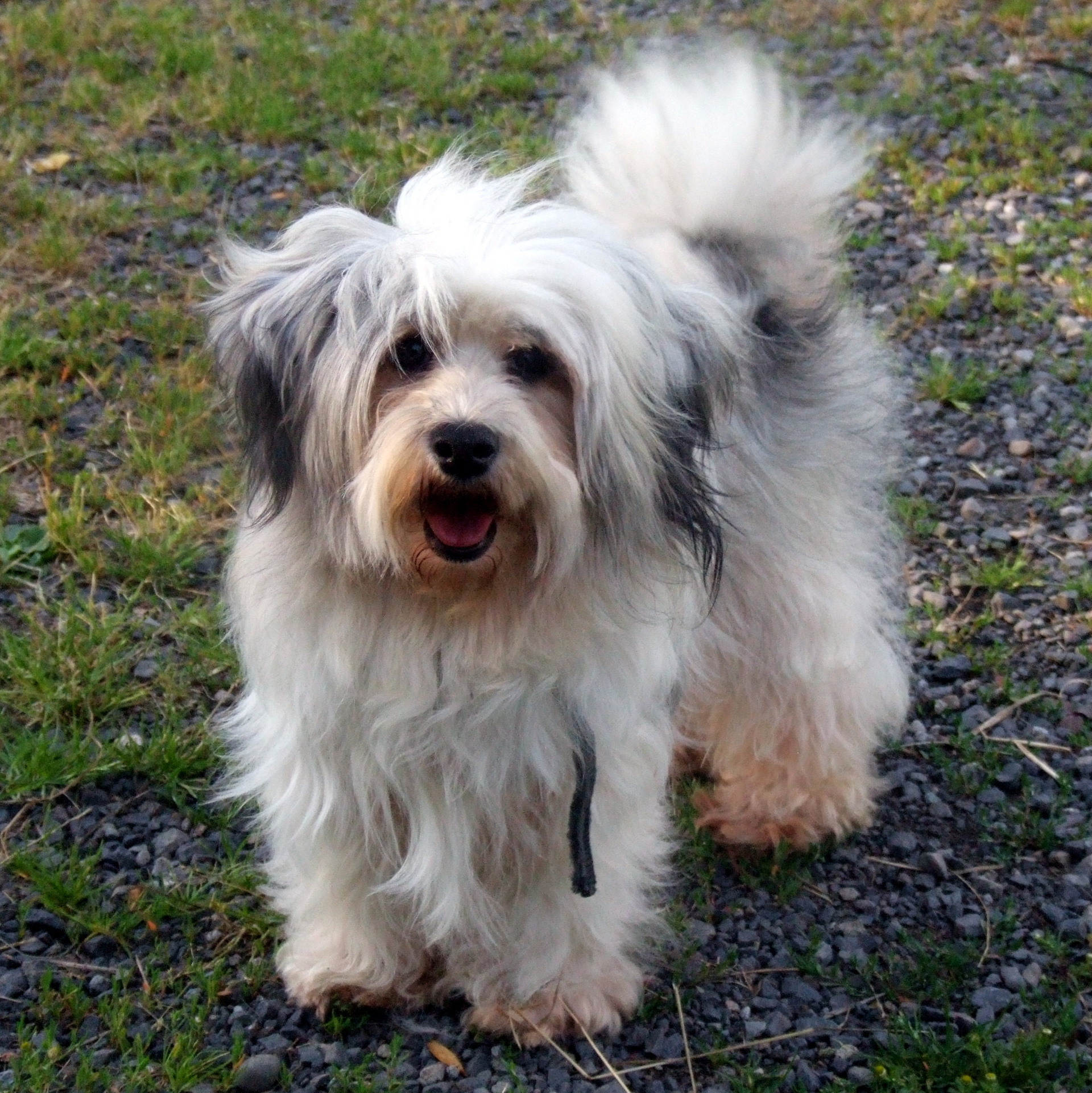![]()
![]()
Why we breed Havanese:
We love the Havanese breed because they are very affectionate, friendly, happy, and playful. They are wonderful companions. Havanese are one of the NON-Shedding breeds. thus being a great little friend for allergy sufferers. They are sweet and fun, small dogs who will bring lots of love and joy to your life !
Description: The Havanese is related to the Bichon Frise and may be referred to as the Bichon Havanese or as the Havana Silk Dog. Havanese are known as the National Dog of Cuba. They are a happy, outgoing, small dog whose temperament and trainability have made them excellent candidates for obedience training. Havanese cannot miss what is going on around them, so you may find them sitting somewhere high. They are shy and slightly aloof with strangers, but warm up to their owners plenty. They can be quite vocal as they love the sound of their own voice. They are charming, intelligent and sophisticated in appearance. Havanese are alert, making them good watch dogs. They have been known to guard children, displaying their loving and devoted personalities. They live long lives, are sturdy in strength, and possess a kind spirit. They attach to their owners easily, making them "fantastic little friends." Havanese are a small dog in the Toy category. They have small, but well muscled bodies, covered in profuse soft fur. They can have a little bit of a shaggy appearance, but when brushed, have a distinguished look about them. They have furrowed eyebrows and a beard, the same length as the rest of their fur. They can be a bouquet of colors as well, ranging from cream, gold, silver, blue, black and chocolate, which is sometimes called "tobacco brown". They do need moderate grooming, but no trimming or coiffing is required. Havanese are gentle, kind little dogs that are ideal for owners who want a little buddy to follow them around.
Other Names: Bichon Havanais, Bichon Havanese, Havana Silk Dog, Bichon Habanero
Type: Companion Dog
Height: 8½ - 11½ inches Weight: 7 - 18 lbs
Colors: White, cream, champagne, black, silver, sable, black and tan, blue, gold, chocolate, parti-color and tri-colored. They can have solid or broad markings of any of these colors.
Coat: Long, flat and soft; tufts towards extremities. Coats can also be wavy. They have a double coat of long, soft outer hair, and sometimes a curtain of hair over the eyes.
Temperament: The Havanese are very playful, happy-go-lucky, and intelligent. hey are responsive and friendly. They are faithful, and devoted to their masters. They will defend their own, but do not make good guard dogs. They do make good watch dogs, however, because they are alert. They are shy and aloof around strangers, but love their masters. They are natural clowns as well. Havanese are serious and calm at times, affectionate and living to please. They are attentive, quiet and gentle, but still love to play. They get along with almost everyone, including children and other animals.
With Children: Yes, loving human companionship, they will play tirelessly with children.
With Pets: Yes, good with other pets.
Special Skills: Family pet and companion. Good therapy dog. Agility training
Watch-dog: High. Havanese are very alert. They bark, to alert that someone is coming to the door. Non-aggressive.
Guard-dog: Low. Although they have been known to defend, they are small, and can be shy.
Care and Training: Regular brushing or combing of the Havanese's non-shedding coat will keep them free of tangles. Havanese require minimal exercise, making play sessions an easy outlet for their energy.
Learning Rate: High. Obedience - High. Problem Solving - High.
Activity: Medium
Special Needs: Attention and grooming.
Living Environment: Havanese should be indoors with semi-constant companionship. They are not meant to be kept outside or left alone. The best owner for this breed would be an individual or family who can devote a lot of time to the Havanese, living in a city or suburban environment.
Health Issues: Juvenile cataracts. Other health concerns include PRA (Progressive Retinal Atrophy), chondrodysplasia, deafness, hip dysplasia, liver shunts, luxating patellas, and skin conditions. HOWEVER, Blessing Acres' Havanese have not shown any of these health issues. We have had a few pups with "cherry eye", which is easily correctable. It is an aesthetic minor surgery, or sometimes it is treatable with an eye ointment.
Life Span: 14 - 15 years.
Litter Size: 1 - 9 puppies, with the average being 4 puppies.
Country of Origin: Cuba
History: Descending from the Bichon type dogs of the Old World, the Havanese has the same origins as the white Toys dogs from the Mediterranean area called Barbichons. The earliest reference to the modern Havanese go back to Plinius in the Mediterranean region. Researchers believe the breed originated with the Spanish, having come from the West Indies, where Bichon Frises lived on the island of Tenerife. Cubans, however, believe the breed came from the islands of Malta and Bologna near Italy. Captains back then were thought to have brought these types of dogs to Cuba, offering them as gifts in return for a night's stay in someone's house: "Hence, the entree gift of one of these precious little dogs to the wealthy Senoras opened the doors of her home to them." Dogs in both Spain and Italy played an large part in bringing the Havanese to the New World. Though descendants of the Bolognese, Maltese and possibly Bichon Frise, the breed is also thought to have been crossed with a small poodle to have its current attributes. Dogs of these kind were popular among the upper class in Cuba. Catalina Laza was a wealthy Cuban wife of a man who owned a Cuban sugar mill, and she was known to raise Havanese for her own pleasure and to present them to the public. During the Cuban Revolution in 1959 the breed was threatened, and owners packed up the little dogs and took them to America. Soon the Havanese Club of America was formed. Unknown until the early 1970s, the Havanese has in recent years been exhibited in most large European and Scandinavian shows.
First Registered by the AKC: 1995 AKC Group: Toy



